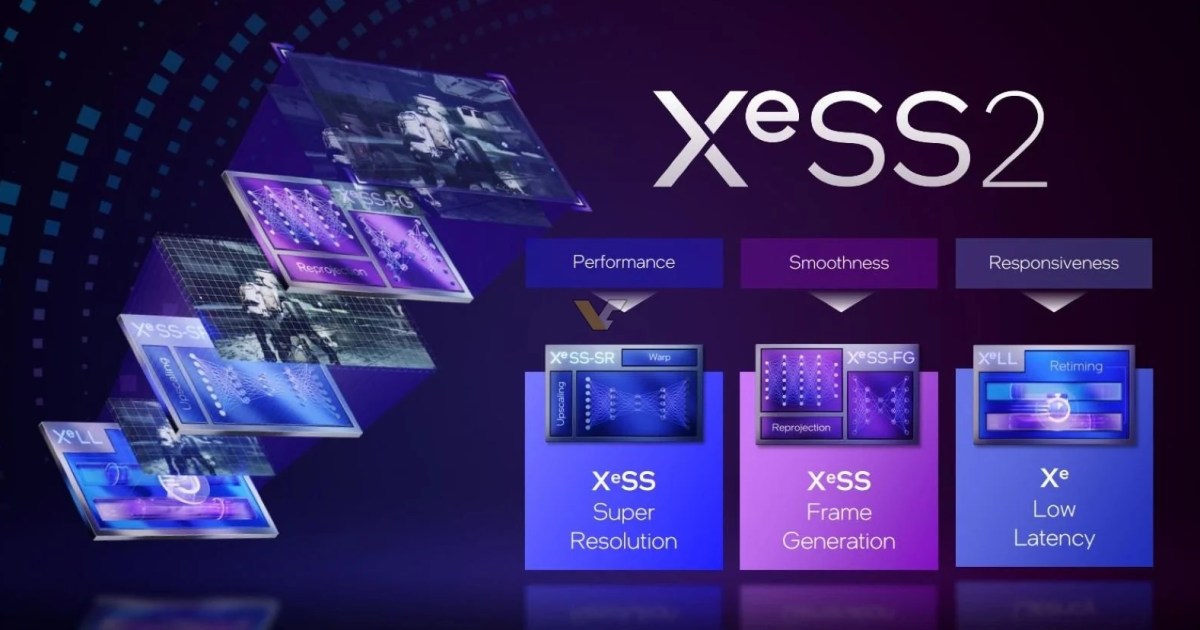Intel has launched the XeSS 2.0 Software Development Kit (SDK), empowering game developers with advanced upscaling, frame generation, and latency reduction technologies. Available on Intel’s GitHub repository, the SDK provides pre-built tools for seamless integration of XeSS into game projects. This release marks a significant step in Intel’s efforts to enhance gaming visuals and performance.
XeSS 2.0: A Comprehensive Suite of Technologies
Introduced alongside the Arc B580 and B570 GPUs, XeSS 2.0 comprises three core components: XeSS-SR, XeSS-FG, and XeLL. XeSS-SR utilizes AI-driven super resolution to upscale images, delivering higher resolutions with improved detail. XeSS-FG focuses on frame generation, boosting frame rates for smoother gameplay. Lastly, XeLL minimizes latency for a more responsive gaming experience. These features position XeSS 2.0 as a direct competitor to Nvidia’s DLSS and AMD’s FSR, offering comparable AI-powered enhancements. Furthermore, the updated XeSS inspector tool now supports Vulkan and DirectX 11, streamlining optimization across various rendering APIs.
Integration and Accessibility: Plugins and Limitations
Intel has simplified integration by providing plugins for popular game engines like Unreal Engine and Unity. This allows developers to quickly incorporate XeSS 2.0 into their workflows. However, unlike AMD’s open-source FSR, Intel’s closed-source approach for XeSS 2.0 presents some limitations. As noted by Tom’s Hardware, the licensing agreement restricts reverse engineering, potentially hindering developers seeking deeper customization and control over their graphics pipelines.
Platform Availability and Future Outlook
Currently, XeSS 2.0 is primarily focused on Windows, limiting its immediate availability on other platforms. While future cross-platform support hasn’t been ruled out, the current focus remains on the Windows gaming ecosystem. Although adoption remains limited to a small number of titles, Intel is actively collaborating with developers to encourage wider integration of XeSS 2.0 in upcoming games. This continued effort underlines Intel’s commitment to advancing gaming technology and providing enhanced visual experiences for players.
Conclusion: Intel’s Push for Enhanced Gaming
The release of the XeSS 2.0 SDK signals Intel’s dedication to improving gaming performance and visuals. With its comprehensive suite of technologies, including AI-driven upscaling, frame generation, and latency reduction, XeSS 2.0 aims to compete directly with established solutions like DLSS and FSR. While the closed-source nature and current Windows-centric focus present some limitations, Intel’s ongoing efforts to collaborate with game developers suggest a promising future for XeSS 2.0 in the gaming landscape.











